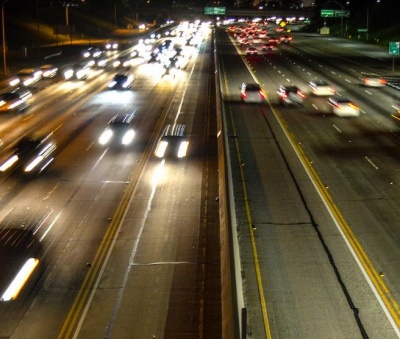Note: The following article first appeared in Longbeachize. It is reprinted with their permission.
The California Strategic Growth Council received its first draft of what has been a seven-month research endeavor examining California's transit goals versus its actual achievements. The results are blunt: While politicians talk up climate-centric transit, statewide policies - even at the local and regional levels - focus on and prioritize the single-occupant car over every other form of sustainable transit.
"There is a gap between the climate-friendly state vision for transportation and the reality that investments at the state and regional levels continue to emphasize automobility," reads the draft presentation.
Professor Elizabeth Deakin and her colleagues at UC Berkeley, UC Davis, and UCLA conducted over eighty interviews with current and former elected officials, advocates and academic researchers, staff at state agencies, transit agencies, and local governments. The resulting report shows that the mismatch between rhetoric and reality is costing California its well-being, both in terms of its environment and its citizens.
The researchers were contracted to do their work under A.B. 285, which basically calls for California's statewide transportation plan to show how the state will get our greenhouse emissions to forty percent below the levels they were in 1990 by 2030. A.B. 285 was celebrated because it called out specific programs for special attention, such as the Affordable Housing and Sustainable Communities program, and rail and low-carbon transit programs.
That is, A.B. 285 set out to measure progress on programs that are specifically aimed at lowering greenhouse gas emissions through investments that make sustainable transportation more convenient and safer.
But Professor Deakin and her colleagues found a glaring contradiction in the climate ambitions of A.B. 285: The programs referenced in the bill represent only two percent of state transportation spending.
Two percent.
An enormously disproportionate amount of spending—including at the regional and local levels—continues to go toward "maintaining, rehabilitating, and operating the mature and extensive highway system," according to the draft report. Additionally—with projects such as the horrendous 710 expansion project, which has been paused, and the 71 expansion project that threatens to destroy hundreds of homes, and the 5 expansion project in north Los Angeles County—California continues to expand freeways. This is despite overwhelming evidence that freeway expansions not only do nothing to solve congestion but also decrease the quality of living for communities near and along freeway corridors.
So how did we get to the point where a bill explicitly requires a focus on climate-centric transit but we are failing to do so? The answer is complicated but explainable, according to UC Berkeley.
The first part of that answer lies in bureaucracy: The structure of transit governance is mind-bogglingly multifaceted, with multiple agencies, organizations, councils, and commissions contributing to a decentralized approach to statewide transit. In other words: You need many different hands to shake one another just to get a project off the ground. And when so many of those hands work in silos, agreement—particularly agreement in alignment with climate goals—is rare.
Take a glance at the statewide transportation agencies alone: We have the California State Transportation Agency - CalSTA - which oversees the California Transportation Commission and Caltrans; then there's the California Air Resources Board (CARB), the California High-Speed Rail Authority, and the California Strategic Growth Council - the very council tasked with this report to remind them that they have overly bureaucratized their own system.
Then there are regional and local organizations, including eighteen different regional Metropolitan Planning Organizations, or MPOs.
Each of these agencies and organizations create their own myriad plans, ranging from Regional Transportation Plans, with their Sustainable Communities Strategies, to CARB's Climate Change Scoping Plan, the Sustainable Freight Action Plan, the Strategic Highway Safety Plan, Caltrans' Modal Plans (which include six individual plans), the California State Rail Plan - and even the California Water Plan touches on climate and transportation.
On top of these complications, plans are often lofty in goal, but the agency writing the plan has neither the power nor the funding to fulfill them. For example, local transportation spending and land use regulations are both local decisions, outside of the control of regional governance even though they have regional impacts - and their climate effects are felt far outside of any boundaries.
And those local and regional powers are putting far more money towards roads than towards active or mass transportation.
"At all levels of government, spending on transportation tends to be additive, without revisiting past commitments to projects or programs. Yet without reconsidering these commitments, California will not meet climate goals or other goals in its 2050 transportation plan," notes the draft report.
So how the hell do we get out of this mess?
There are many potential approaches, but the first one singled out in the draft report is to increase flexibility within these agencies and plans. This would allow them to prioritize projects that can easily meet their goals early, match funds for those projects, and search for alternatives, like offering new types of services or alternative modes of transit, to help achieve these goals.
In other words?
"The new federal infrastructure legislation, together with new state funding, opens up opportunities for reimagining transportation in California," the draft read.
One can only hope.
The final report will be presented in December at the California Strategic Growth Council's monthly meeting.






